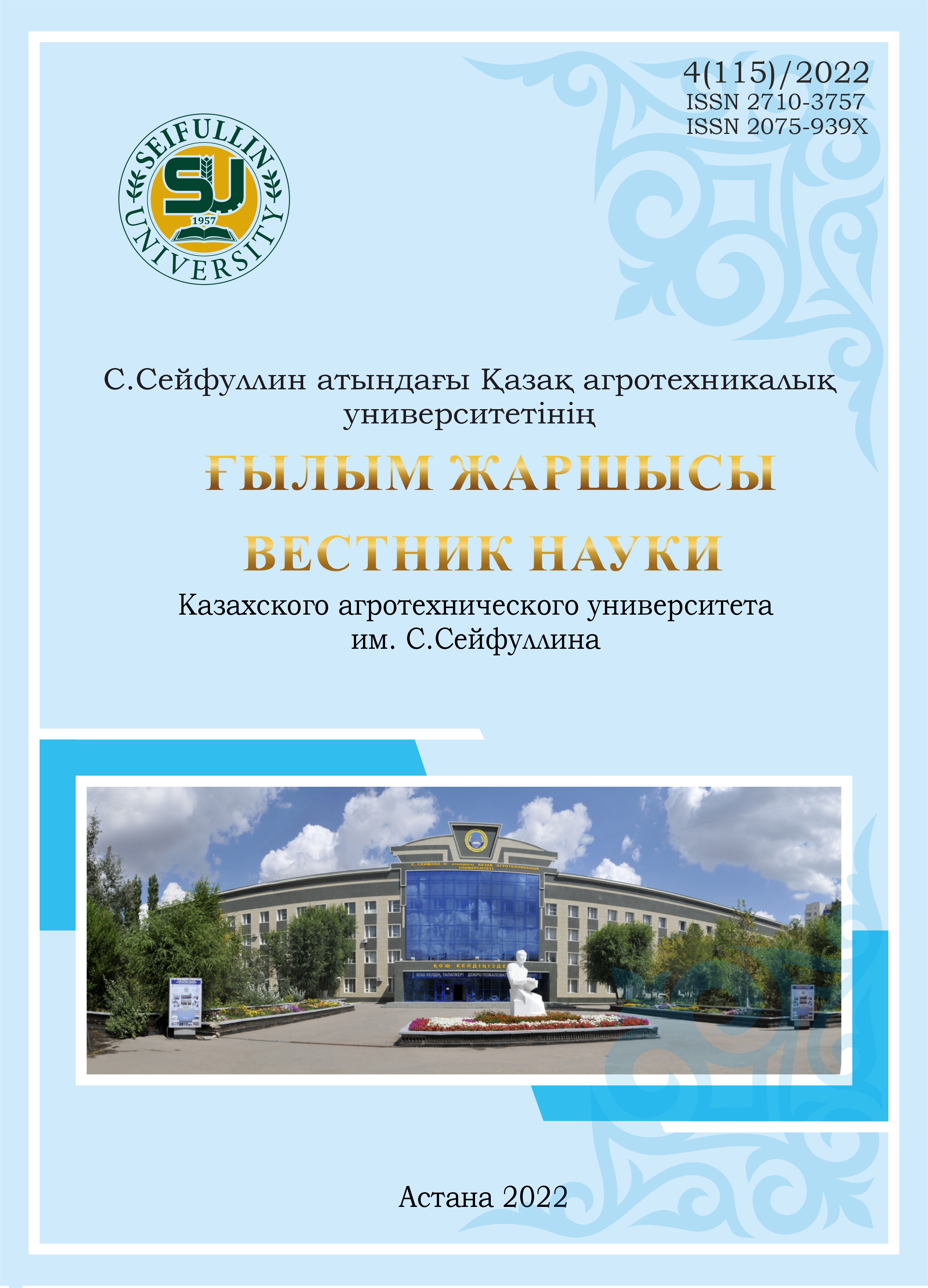CADASTRAL ASSESSMENT OF SHEEP PARASITES OF THE NORTHERN TIEN SHAN
eimeria; sarcocystes; trematodes; cestodes; nematodes; botfly.
DOI:
https://doi.org/10.51452/kazatu.2022.4.1232Keywords:
eimeria; sarcocystes; trematodes; cestodes; nematodes; botfly.Abstract
In the Northern Tien Shan, the qualitative composition of sheep parasites depends on the grazing areas of the animals. Thus, 47 parasites were registered in sheep grazing only in the highlands (9 species of protozoa, 6 - trematodes, 3 - cestodes, 28 - nematodes and 1 species ofbotfly), 22 in sheep grazing in the foothills (6 – protozoa, 3 – trematodes, 2 – cestodes, 10 – nematodes and 1 species of botfly), and in sheep grazing in the desert zone – 16 (4 – protozoa, 1 – trematodes, 2 – cestodes, 9 – nematodes). And the occurrence of mixed infestations depends on the qualitative composition of the parasites. Thus, sheep grazing in the highlands, where 47 parasites are registered, have 19-21 variants of associations, and sheep grazing in the desert zone, where 16 parasites are registered, have 12 variants of associations. The reduction of the qualitative composition of parasites in sheep in modern conditions contributed to the reduction of the number of animals in grazed areas and the modern processing of low-acidified livestock in farms.

